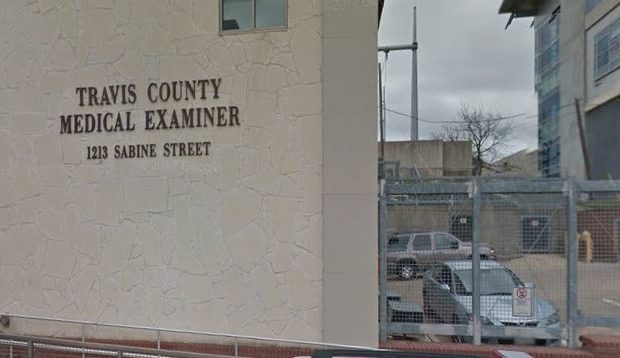Sobriety center likely won’t open until 2018
Monday, July 24, 2017 by
Caleb Pritchard After years of planning, the downtown Austin sobriety center is still months away from opening its doors.
On Wednesday night, the interim head of the nonprofit outfit that will operate the center told the Downtown Commission that the center’s future building is still waiting for its current occupant – the Travis County Medical Examiner’s Office – to clear out to its new digs.
That will likely happen in September, Carol Drennan said, but it will still take months to retrofit the building at 1213 Sabine Street in order to accommodate the sobriety center.
Said Drennan: “We are looking at probably an open date of March or April of 2018. We are hoping it could be earlier but that’s probably the most realistic at this time.”
In the meantime, Drennan and the board of directors at the Sobriety Center Local Government Corporation will continue to lay the administrative groundwork that will guide the center’s operations, such as hiring a permanent executive director as well as the management and support team who will staff the center.
Drennan told the commissioners that the executive director position is on pace to be filled by January and that the rest of the staff will be in place by opening day.
The commissioners peppered Drennan and Assistant City Manager Ray Arellano with questions about the facility, which will be the first of its kind in Austin. Arellano had to initially dispel the misconception that the center will be a sort of long-term rehab facility. Instead, he reminded the commissioners, it will serve as an alternative to jail for anyone picked up for public intoxication. Officers will save hours by being able to bypass the lengthy processing time for booking arrestees and sobriety center patrons can avoid criminal records and costly bail.
The center will have a total of 41 beds and the expected length of stay is about six to seven hours. Staff will also be available to talk to individuals and offer substance abuse counseling and other resources. While the center will occupy the first and second floors of the building, the Austin Police Department’s Homeless Outreach Street Team is also expected to take over the third floor.
Travis County and the city of Austin formalized an interlocal agreement last year to create the sobriety center following an extended study of the proposal by an ad hoc committee. The county agreed to offer its building while the city committed itself to paying for the operational costs. For the first partial year budget, Drennan said the city is putting up $1.2 million.
“We probably have underestimated the personnel cost,” she admitted, adding that the permanent executive director will help zero in on the actual numbers.
And because the executive director will have the ability to raise funds on behalf of the local government corporation, the city won’t necessarily bear the full brunt of the center’s operational costs, which are also expected to be offset by efficiencies achieved by the jail and court system.
The center is modeled after the Houston Recovery Center, but with one stark difference. That facility is staffed to handle a wide variety of intoxication, whereas Austin’s center is currently only scoped for alcohol.
Discussions are being had by the local government corporation to change that, Arellano explained. In the meantime, downtown Austin’s ongoing troubles with the unpredictable synthetic drug K2 are creating some uncertainties.
“The fact that an individual might have used K2, it may be masked by the symptoms that seem to indicate inebriation so that’s one of the things we’re grappling with as we determine what our procedures are going to be,” Arellano said.
Drennan told the commission that she would likely have more to report in October or November. In the meantime, the Sobriety Center Local Government Corporation is set to have five more monthly meetings this year.
The Austin Monitor’s work is made possible by donations from the community. Though our reporting covers donors from time to time, we are careful to keep business and editorial efforts separate while maintaining transparency. A complete list of donors is available here, and our code of ethics is explained here.
You're a community leader
And we’re honored you look to us for serious, in-depth news. You know a strong community needs local and dedicated watchdog reporting. We’re here for you and that won’t change. Now will you take the powerful next step and support our nonprofit news organization?









